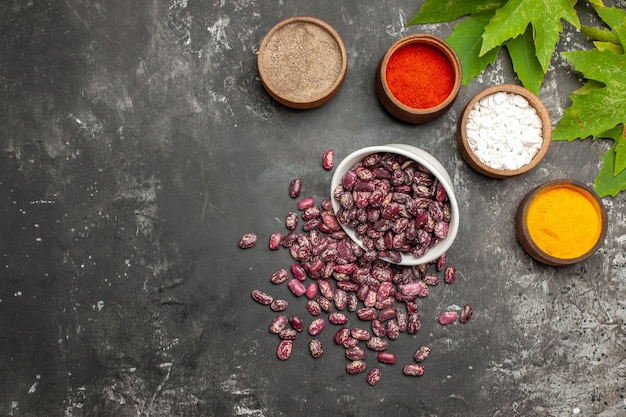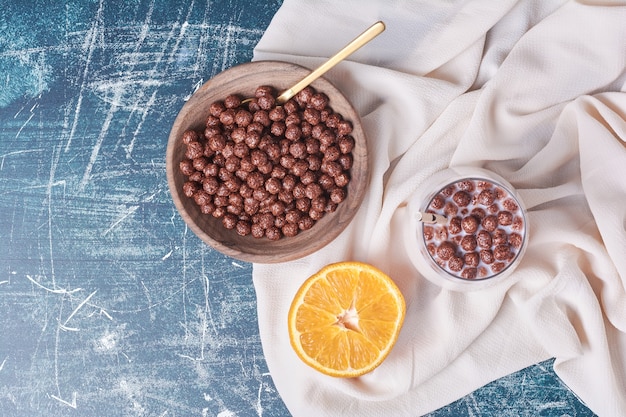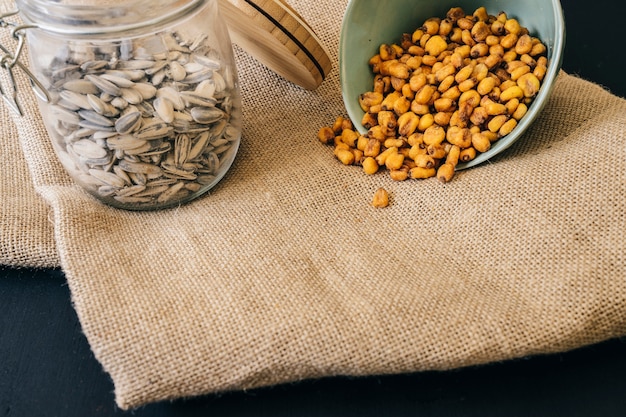You've got a bag of dried lima beans staring back at you from the pantry, and you're feeling a bit unsure. Maybe you've had a less-than-stellar experience with them before, maybe you're simply not sure what to do with them. But let me tell you, dried lima beans, when treated right, are a culinary treasure. They're creamy, nutty, and versatile, with a taste that's anything but bland. They can be the star of a hearty stew, a delicious side dish that elevates any meal, or even the foundation for a vibrant salad.
But here's the thing: cooking dried lima beans can seem intimidating if you're not familiar with them. They can be a bit finicky, and you don't want to end up with mushy, disappointing beans, do you? That's where I come in. I've been cooking with dried beans for years, and I've learned a few tricks along the way. I'm going to share my secrets with you, so you can conquer the world of lima beans and unlock their delicious potential.
Part 1: The Basics – Getting Started

Choosing the Right Beans
First things first, let's talk about beans. Dried lima beans are a common sight in most supermarkets. They come in various sizes – small, medium, and large – but I personally prefer the medium ones. They tend to cook more evenly, resulting in a more consistent texture. When you're choosing your beans, make sure the bag looks fresh and gives it a good rinse to remove any debris. If you spot any pebbles or little bits of dirt, pluck them out – you definitely don't want any unwanted surprises in your final dish!
The Importance of Soaking
Now, here's where things get interesting. Soaking your dried beans is a crucial step, and there are a couple of good reasons for it. Firstly, soaking helps to soften the beans significantly, which means they'll cook faster and more evenly. Secondly, it helps to mitigate some of the "beany" flavour, which can be a bit overpowering for some people. Personally, I enjoy a hint of that beany flavour, but it's all about personal preference.
Soaking is simple: just put your beans in a large bowl, cover them with cold water, and let them rest in the fridge for at least 8 hours, or even better, overnight. I've been known to soak them for up to 24 hours, especially if I'm in a hurry. Just make sure the water is cold, because warm or hot water could lead to fermentation, which is definitely not what we want!
Part 2: The Art of Cooking Lima Beans

Now that your beans have had their luxurious soak and are plump and ready to go, it's time to get cooking! And trust me, this is the part where things get really fun. You'll need a large pot, because your beans will expand quite a bit during the cooking process. Fill the pot with fresh water, add your soaked beans, and bring it to a boil. Then, lower the heat to a gentle simmer and cook until the beans are tender but still hold their shape. This usually takes about 45 minutes to an hour, but it can vary depending on the size of the beans and how long you soaked them.
Salt, Timing is Key
Here's a tip I learned from my grandmother: don't rush the salt! Adding salt too early can make the beans tough. Wait until about 15 minutes before the end of cooking time, then add a good pinch of salt to the pot. This will season the beans beautifully and help them to absorb the flavour.
The Taste Test: Your Lima Bean Gauge
Remember, everyone has their own idea of "tender". So, once your beans have been simmering for a while, take one out of the pot and give it a good taste test. It should be soft and creamy but not mushy. If it's still a bit firm, cook it for another 5-10 minutes and try again. You want your beans to be perfectly cooked, so don't rush this step!
Part 3: The Wonderful World of Lima bean recipes

Alright, you've got your perfectly cooked lima beans. Now what? The possibilities are endless! You can use them in soups, stews, salads, dips, or even as a delicious side dish. They're also perfect for making veggie burgers, bean salad sandwiches, or simply enjoyed on their own with a dollop of butter and some fresh herbs.
Here are a few of my favourite ways to use lima beans to get your creative juices flowing:
Classic Lima bean soup: A Comforting Staple
Lima bean soup is a classic comfort food that's incredibly easy to make. Simply saute some onions and celery, then add your cooked lima beans, vegetable broth, and some fragrant herbs like thyme or bay leaf. Simmer for a few minutes, and you have a hearty and delicious soup. Top it off with a dollop of sour cream or a sprinkle of Parmesan cheese for an extra touch of flavour and richness.
Refreshing Lima Bean Salad: A Light and Delicious Option
For a lighter meal, try a lima bean salad. Combine your cooked beans with chopped tomatoes, cucumbers, onions, and a tangy vinaigrette dressing. You can also add other ingredients like bell peppers, olives, or feta cheese for extra flavour and texture. This salad is incredibly refreshing and perfect for summer picnics or light lunches.
Indulgent Lima Bean Dip: A Crowd-Pleasing Treat
If you're looking for something a little more indulgent, try a lima bean dip. Combine your cooked beans with some creamy mayonnaise, sour cream, chopped onions, and herbs like parsley and dill. You can also add other ingredients like roasted red peppers, black olives, or garlic. Serve it with chips, crackers, or crudités for a delicious and satisfying snack or appetizer.
Part 4: Mastering the Art of Lima bean cooking
Lima Bean Etiquette: Tips and Tricks for Success
Here are a few more tips and tricks to make your lima bean cooking experience even better and help you avoid any common pitfalls:
- Don't Overcook!: Overcooked lima beans are mushy and unpleasant. Cook them until tender but still hold their shape, ensuring they retain a good bite.
- A Touch of Acid Makes All the Difference: A splash of lemon juice or vinegar can help to brighten the flavour of your lima beans and prevent them from becoming too mushy.
- Embrace Flavour Exploration: Lima beans go well with a variety of flavours. Try adding garlic, ginger, cumin, paprika, or other spices to your recipes to add depth and complexity.
- Leftover Magic: Lima beans are great for leftovers! Use them in salads, sandwiches, soups, or even freeze them for later use.
- Get Creative!: Lima beans are a versatile ingredient. Use your imagination and experiment with new flavours and combinations.
Troubleshooting: When Things Don't Go Quite as Planned
Even the best cooks can encounter a few bumps in the road. Here are some common problems you might face when cooking dried lima beans and how to solve them:
- Beans Too Hard: If your beans are still too hard after an hour of cooking, they may need more time. Add a little more water if necessary, and continue cooking until they reach the desired tenderness.
- Beans Too Mushy: If your beans are mushy, you've likely overcooked them. Don't fret! You can still use them in a dip or spread, where the texture won't be as noticeable.
- Strong Beany Taste: If your beans have a strong beany flavour, try soaking them for a longer period, adding a little acid to the cooking water, or experimenting with a different brand of beans.
- Foamy Beans: Foam on your beans can be caused by overcooking or hard water. If you see foam, skim it off and continue cooking.
Part 5: My Lima Bean Journey: A Personal Touch
I've always had a soft spot for lima beans. My grandma used to make this amazing lima bean casserole that I still crave to this day. She'd add bacon, onions, and a creamy sauce, and it was just the most comforting and delicious thing ever. I remember her telling me that lima beans were "good for your brain," which I always found amusing. Maybe she was right!
But I'm not going to lie, I've had my share of disappointing lima bean experiences. Once, I tried making a lima bean salad with some store-bought beans, and it was just awful. The beans were mushy, and the flavour was bland. It was a real culinary disaster!
So, I learned my lesson: if you want to enjoy delicious lima beans, you need to start with fresh, dry beans and cook them properly. It's not that hard once you get the hang of it, and the results are definitely worth it!
Part 6: The Lima Bean Family: Exploring the Legume World
Lima beans are just one member of the large and diverse legume family. Other popular legumes include chickpeas, kidney beans, black beans, pinto beans, and lentils. All of these beans are packed with nutrients and can be used in a variety of dishes.
Here's a table that compares the nutritional value of different legumes, giving you a glimpse into their incredible nutritional profiles:
| Legume | Calories per cup | Protein (grams) | Fiber (grams) | Iron (mg) | Folate (mcg) |
|---|---|---|---|---|---|
| Lima beans | 210 | 15 | 15 | 3 | 135 |
| Chickpeas | 269 | 15 | 12 | 4 | 230 |
| Kidney beans | 227 | 15 | 15 | 3 | 135 |
| Black beans | 220 | 15 | 15 | 4 | 100 |
| Pinto beans | 220 | 15 | 15 | 3 | 135 |
| Lentils | 230 | 18 | 16 | 6 | 90 |
As you can see, all legumes are excellent sources of protein, fiber, iron, and folate. They're also low in fat and calories, making them a healthy choice for any diet.
Part 7: The Lima Bean Community: A Global culinary journey
Lima beans have been a staple food in many cultures for centuries. They are believed to have originated in South America, where they were cultivated by the Inca people. Today, lima beans are grown all over the world, and they are a popular ingredient in cuisines from all continents.
In the United States, lima beans are often associated with Southern cooking, where they are used in dishes like lima bean soup, succotash, and hoppin' john. In other parts of the world, lima beans are used in a variety of ways, from stews and salads to dips and desserts.
This global reach is a testament to the versatility and deliciousness of these humble legumes.
Part 8: The Lima Bean's Legacy: A culinary adventure Awaits
Lima beans are truly an amazing ingredient. They are nutritious, versatile, and undeniably delicious. Whether you are a seasoned cook or just starting out, I encourage you to give dried lima beans a try. You might be surprised at how much you enjoy them!
So, next time you're at the supermarket, pick up a bag of dried lima beans and embark on a culinary adventure. You won't regret it. And remember, if you have any questions, feel free to leave a comment below. I'm always happy to help!
FAQs
Here are some frequently asked questions about cooking dried lima beans, to help you on your journey to mastering these delicious legumes:
- Do I have to soak lima beans? Soaking lima beans is highly recommended because it helps to soften them up and reduce the "beany" flavour. However, if you're in a hurry, you can skip soaking and cook the beans for a longer period of time. Just be sure to add a little more water to the pot.
- How long do I cook lima beans? Dried lima beans should be cooked until tender but still hold their shape. This usually takes about 45 minutes to an hour, but it can vary depending on the size of the beans and how long you soaked them.
- Can I freeze cooked lima beans? Yes, you can freeze cooked lima beans. Just make sure to cool them completely before freezing. They will last in the freezer for up to 3 months.
- What are some good recipes for lima beans? Lima beans are fantastic in soups, stews, salads, dips, and veggie burgers. You can also use them as a side dish or simply enjoy them on their own.
- Where can I buy dried lima beans? Dried lima beans are widely available at most supermarkets. You can also find them at specialty grocery stores and online retailers.
I hope this guide has helped you learn how to cook delicious lima beans from dry! Now, get out there and get cooking! And remember, if you have any questions, feel free to reach out. Happy bean-ing!
Everyone is watching

Perfect Rice Every Time: The Ultimate Guide to Cooking Rice
Cooking TipsAs a self-proclaimed foodie, I've always been a bit obsessed with rice. It's the foundation of countless cuisi...

The Ultimate Guide to Cooking Asparagus: Tips, Techniques, and Recipes
Cooking TipsAsparagus. The mere mention of this spring delicacy conjures up images of vibrant green spears, crisp and burs...

Ultimate Guide to Cooking the Perfect Thanksgiving Turkey
Cooking TipsThanksgiving. Just the word conjures up images of overflowing tables laden with delicious food, the scent of r...

Prime Rib Roast Cooking Time Chart: Per Pound Guide
Cooking TipsPrime rib roast. Just the name conjures images of lavish dinners, crackling fires, and hearty laughter. It’s ...

Can You Cook Spaghetti with Gasoline? (The Shocking Truth)
Cooking TipsWe've all seen those crazy internet trends. You know, the ones that make you wonder, "Did someone actually try...
